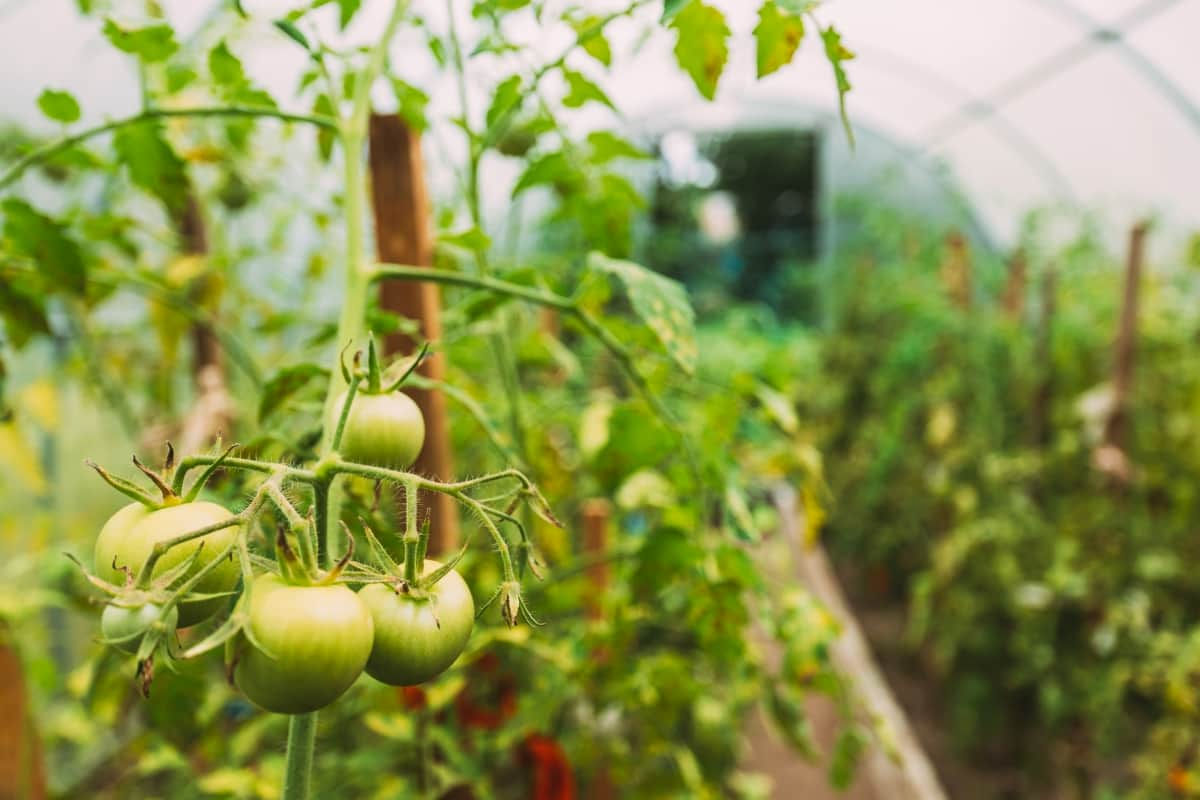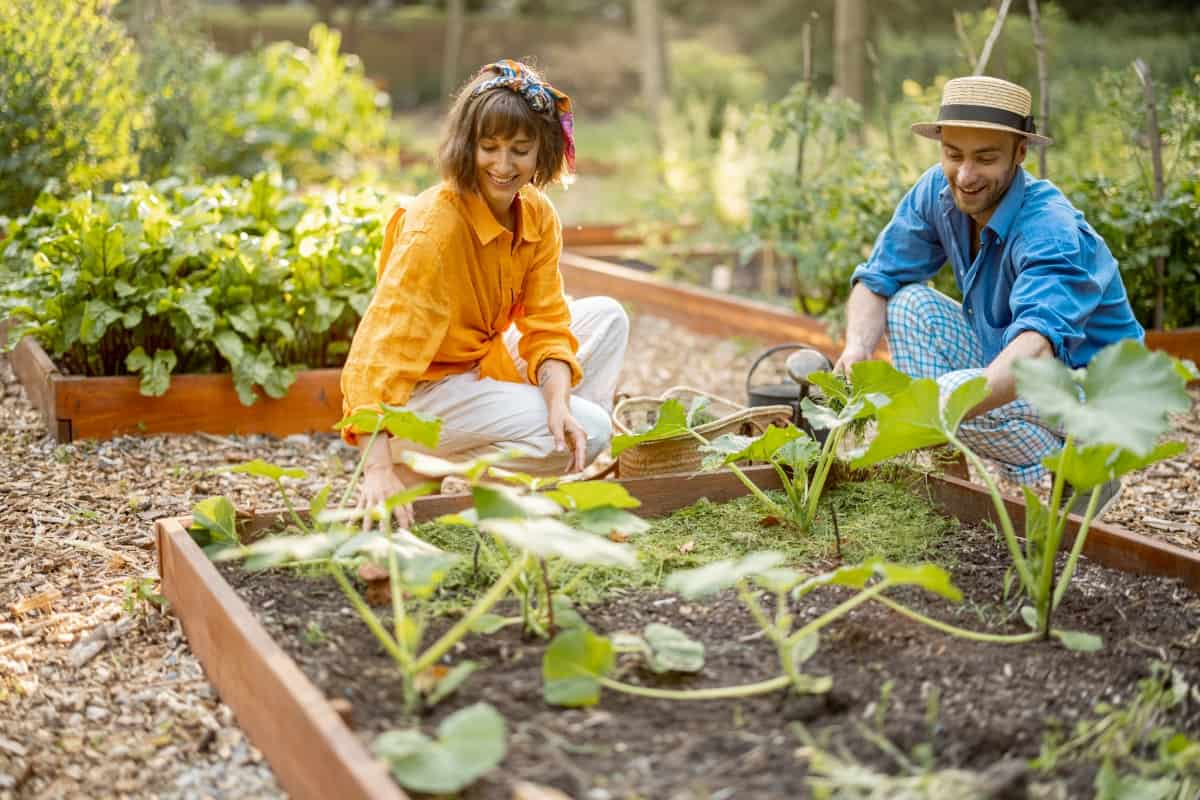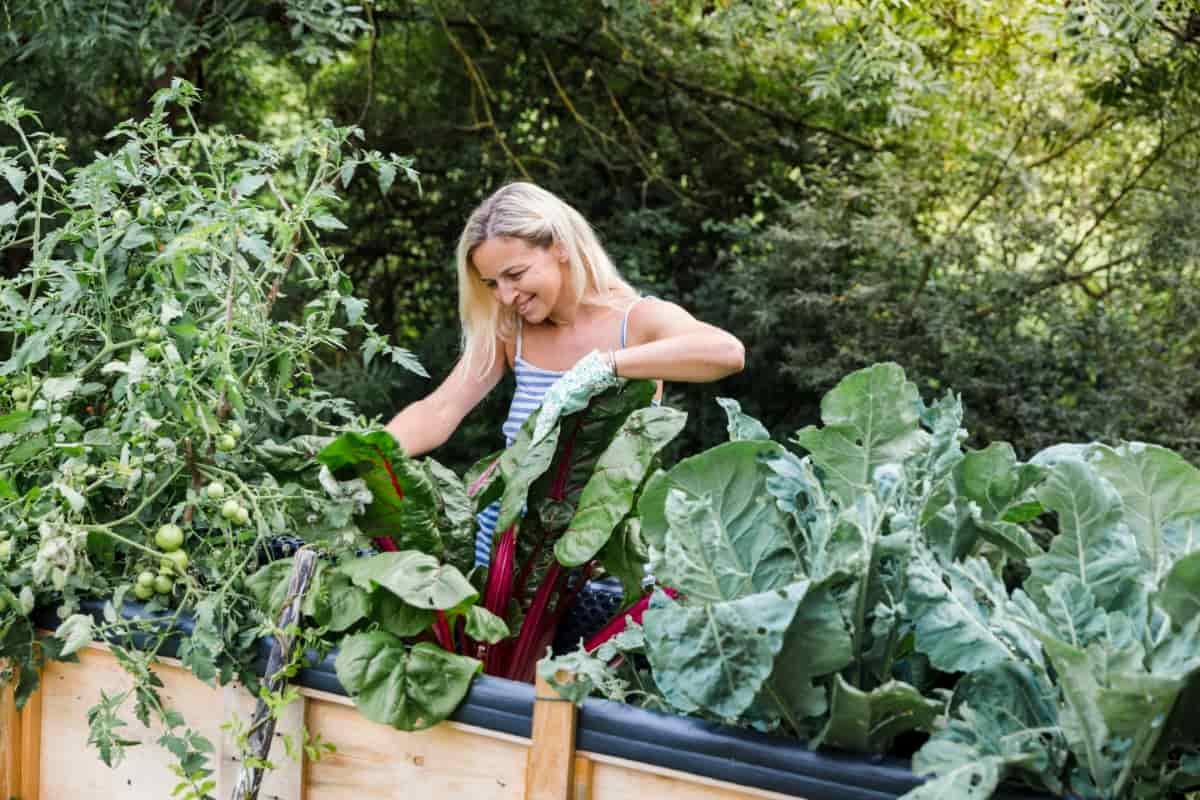Raised bed gardening is the perfect solution for those who want to grow their vegetables in a limited space. With the right growing conditions, anyone can create a thriving raised bed garden and enjoy fresh homegrown produce all season.

How to Start Vegetable Raised Bed Gardening from Scratch
Why are Raised Beds Better for Growing Vegetables?
- Raised beds are becoming an increasingly popular choice for vegetable gardening, and a good reason. The main advantage of raised beds is that they allow more control over the growing conditions of your vegetable plants.
- A raised vegetable garden bed is essentially a box-shaped structure on the ground. It’s filled with soil and designed to provide an ideal vegetable-growing environment. Raised beds can be made from wood, stone, plastic, or metal. They’re perfect for small spaces like patios and balconies, making them accessible even if one lives in an apartment complex.
- Another benefit is that they can help with drainage. Because they are elevated above ground level, water drains away more easily, and there is less chance of waterlogging.
- Raised beds offer better accessibility, reducing the need to bend when working on them. The height makes it easier to work with since no bending is required, which is handy if anyone has mobility issues or injuries.
Best Soil for a Raised Vegetable Garden
- For starting a raised bed vegetable garden, selecting the right soil is important for the success of your plants. The best soil for this type of gardening is a mix of about 1/3 of topsoil, 1/3 of compost, and 1/3 of peat moss or coconut fiber.
- Topsoil provides the base structure and nutrients plants need to grow healthy roots and stems. Compost enriches the soil with organic matter, which can help improve drainage while retaining moisture in the root zone. Peat moss or coconut fiber acts as a natural sponge by holding water in reserve until plant roots need it.
- Combining these three components creates an ideal environment for your vegetables. It gives them access to essential minerals, organic matter, air circulation, and proper drainage.
- It’s important not to use regular garden soil as it may contain weed seeds that can sprout up unwanted plants in your raised bed garden. Also, avoid using too much sand or clay soils, creating poor draining conditions leading to root rot or other diseases.
What Vegetable Plants Can You Grow in a Raised Bed?
- Tomatoes thrive in raised beds because they need ample space for their roots to spread out and good drainage. They also benefit from planting deeply, so ensure your raised bed is at least 12 inches deep.
- Squash and melons also do well in raised beds, but it is important to give them enough space to sprawl out or use trellises for vertical growth. Cucumbers also benefit from trellising or other means of support.
- Beans and peas are easy-to-grow options that can be planted close together without competing for space since their roots don’t take up much room. Onions are another popular addition to the raised bed garden due to their versatility in cooking.
- Eggplant does well with plenty of organic matter mixed into the soil before planting, while root crops like beets and carrots prefer loose soil that isn’t too heavy or compacted.
- Potatoes and sweet potatoes thrive when grown deep within a raised bed filled with nutrient-rich soil mixtures.
- Peppers love warm soil and plenty of sunshine, making them a good choice for raised beds. They don’t require much maintenance other than regular watering.
- Cucumbers are easy to grow in raised beds as long as they have support for climbing vines. Trellises or cages work well.
- Onions do best when grown from sets rather than seeds, but either way, they’re a snap to cultivate in a well-draining garden bed with loose soil.
How to Care for Raised Bed Garden?
- Watering – Raised beds require more frequent watering than traditional gardens since they dry out faster. It’s best to water the plant deeply once or twice a week. Water is at the base of the plants in the morning or evening.
- Weeding – Regular weeding is necessary for any garden, including raised beds. Remove weeds carefully by hand as soon as you spot them before they get too big, and start competing with your plants for nutrients.
- Fertilizing – Raised beds typically need more fertilization than regular gardens due to their limited soil capacity. Use organic compost or fertilizer according to package instructions throughout the growing season.
- Pest control – Watch for plant pests such as aphids, caterpillars, and slugs that can damage crops. Consider using natural control methods such as companion planting and insect-repelling herbs like basil and marigolds.
- Mulching – Mulching helps retain moisture in the soil, discourages weed growth, and regulates soil temperature during weather fluctuations while providing additional nutrients over time.
In case you missed it: How to Start Backyard Raised Bed Garden in the USA: For Vegetables, Flowers, Fruits, and Herbs

Tips for Successful Raised Bed Vegetable Garden
- Consider the size and space of your raised bed. The ideal width is between 3-4 feet, allowing easy access from either side.
- Once your raised bed is set up, it’s important to fill it with a high-quality soil that mixes topsoil, compost, peat moss, or coconut fiber. This will give the necessary nutrients for healthy plant growth.
- When selecting what vegetables to grow in your new garden, start with what you love to eat.
- Carefully watch out for pests such as aphids or slugs which can damage plants quickly if not addressed promptly.
- Lastly, don’t forget about crop rotation – rotate different types of plants each year so they aren’t always growing in the same spot, which helps prevent disease outbreaks.
Steps to Start a Vegetable Raised Bed Gardening
- Choose the location: Select an area that receives ample sunlight, ideally 6-8 hours daily. Ensure easy access to water and consider factors such as wind, drainage, and proximity to trees or shrubs.
- Decide on the bed size: Raised beds can be any length, but it’s best not to exceed 4 feet in width so you can easily reach all areas without stepping into the bed.
- Build or purchase the frame: You can build your raised bed from wood or use pre-made kits from plastic, metal, or composite lumber.
- Fill with soil mixture: Use a combination of topsoil, compost, and peat moss (or coconut fiber) for optimal plant growth. It’s important to use high-quality soil because it provides essential nutrients for plant growth. Ensure no rocks or debris are in the soil before planting, as they can interfere with root growth.
- Planting time: Now it’s time to choose what vegetables you want to grow based on climate zone and personal preference.
- Water regularly: Raised beds need frequent watering since they dry out faster than traditional gardens due to their height above ground level.
In case you missed it: Frequently Asked Questions About Raised Bed Gardening

Conclusion
Starting a raised bed vegetable garden is a great way to grow your fresh produce at home. Raised bed gardening offers the perfect opportunity to grow vegetables in one compact space. Finally, you can have a bountiful harvest of fresh and delicious produce with proper planning and care.
- Feed Your Flock for Less: Top 10 Tips to Save on Chicken Feed
- Ultimate Guide to Ossabaw Island Hog: Breeding, Raising, Diet, and Care
- Hatching Answers: The Top 10 Reasons Your Chickens Aren’t Laying Eggs
- Eggs and Economics: Breaking Down the Cost of Raising Backyard Chickens
- Defend Your Greens: Proven Methods to Keep Iguanas Out of Your Garden
- Ultimate Guide to Cinnamon Queen Chicken: A Comprehensive Guide for Beginners
- Ultimate Guide to California Tan Chicken: Breeding, Raising, Diet, Egg-Production and Care
- Ultimate Guide to Marsh Daisy Chicken: Breeding, Raising, Diet, and Care
- 10 Types of Chicken Farming Businesses You Can Start for Profits